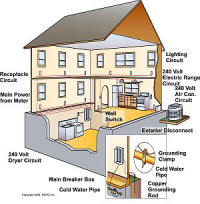![MP900382657[1]](http://nspg-software.com/wordpress/wp-content/uploads/2010/06/MP9003826571.jpg)
Knowing how to do a few simple calculations, and knowing the right calculation to use, can make a big difference to your bottom line. Even though you probably use a tool like Numbers Cruncher to automatically do these calculations, understanding these concepts will help you to better measure how your business is doing from a profit perspective.
Many businesses set their prices based on Markup rather than the easier to use Profit Margin. This can yield a lower profit amount than they think they are earning because it is hard to tell how much of their sales price is profit. Let’s define Profit Margin and Markup so we know how each is calculated.
Markup: The percentage of the cost price you add on to get the selling price.
Selling Price = Item Cost X (1 + Markup %)
Profit Margin: The percentage of the final selling price that is profit. We’ll call this Profit. Selling Price = Item Cost ÷ (1 – Profit %)
As you may be able to tell from these definitions, a selling price with a Profit will earn in more profit dollars than a selling price with a Markup of the same percentage. So, using the Profit calculation will allow you to earn the same amount of money with a lower percentage, and you can easily see how much Profit you earn on each job.
Businesses that sell individual things like shirts, hamburgers, or groceries, use Markup because it is easier to calculate a sales price from a cost using Markup. If your markup is 40%, then your sales price will be 40% above the item cost. They use this method because the money they earn is primarily based on the item they sell and not their added labor.
 Service businesses usually use Profit because you can easily calculate profits from a sales total. Since the costs involved in providing a service can be much more complicated than the cost of selling a shirt, using the Profit percentage method to calculate the profit dollars earned is much easier to understand. The profit part of any sale is a set percentage of the total selling price.
Service businesses usually use Profit because you can easily calculate profits from a sales total. Since the costs involved in providing a service can be much more complicated than the cost of selling a shirt, using the Profit percentage method to calculate the profit dollars earned is much easier to understand. The profit part of any sale is a set percentage of the total selling price.
Let’s take a look at how the two calculation methods work.
For example, to set your selling price on an item that costs $100 with a 20% Markup:
$100 X 1.2 = $120 Selling Price
Profit = $20
To set your selling price on an item that costs $100 with a 20% Profit:
$100 ÷ (0.8) = $125 Selling Price
Profit = $25
How much profit did I make on that job?
20% profit based on cost (Markup) cannot easily be calculated from your sales figures. You will need to know your cost for each job, and individually calculate the markup. Then you can add up the individual markup amounts to see your profit. There is no simple calculation to show how much profit you made based on the selling price if you use the Markup method.
![MP900309194[1]](http://nspg-software.com/wordpress/wp-content/uploads/2010/06/MP9003091941.jpg) Profit based on your selling price simplifies tracking the actual profit dollars you made. 20% profit based on Sales allows you to know how much profit you made simply by knowing the dollar amount of sales for a single job or for many jobs over a period of time. In the Profit example above, it is easy to tell how much profit you made just by knowing the total selling price and your original profit percentage. $125 X 20% = $25 profit.
Profit based on your selling price simplifies tracking the actual profit dollars you made. 20% profit based on Sales allows you to know how much profit you made simply by knowing the dollar amount of sales for a single job or for many jobs over a period of time. In the Profit example above, it is easy to tell how much profit you made just by knowing the total selling price and your original profit percentage. $125 X 20% = $25 profit.
Our recommendation to most small service businesses is to keep it simple. Until you reach a certain size and sophistication, use all of your business costs like labor, overhead, material costs, and profit together to set your profitable selling prices. Accounting for all of your costs and properly calculating your profitable selling price is more important than tracking individual accounting details.
Using a preconfigured software tool like Numbers Cruncher automates the process of setting your profitable prices. Understanding what you are doing, will help you decide the proper profit levels your business needs to survive and grow.
